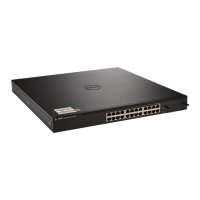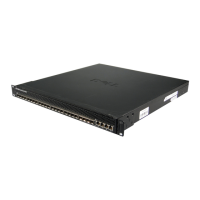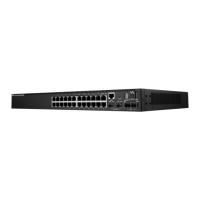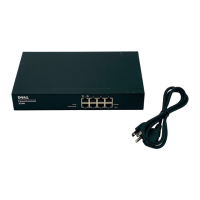Configuring VLANs 551
22
Configuring VLANs
This chapter describes how to configure VLANs, including port-based
VLANs, protocol-based VLANs, double-tagged VLANs, subnet-based VLANs,
and Voice VLANs.
The topics covered in this chapter include:
• VLAN Overview
• Default VLAN Behavior
• Configuring VLANs (Web)
• Configuring VLANs (CLI)
• VLAN Configuration Examples
VLAN Overview
By default, all switchports on a PowerConnect 8000/8100-series switch are in
the same broadcast domain. This means when one host connected to the
switch broadcasts traffic, every device connected to the switch receives that
broadcast. All ports in a broadcast domain also forward multicast and
unknown unicast traffic to the connected host. Large broadcast domains can
result in network congestion, and end users might complain that the network
is slow. In addition to latency, large broadcast domains are a greater security
risk since all hosts receive all broadcasts.
Virtual Local Area Networks (VLANs) allow you to divide a broadcast domain
into smaller, logical networks. Like a bridge, a VLAN switch forwards traffic
based on the Layer 2 header, which is fast, and like a router, it partitions the
network into logical segments, which provides better administration, security,
and management of multicast traffic.
Network administrators have many reasons for creating logical divisions, such
as department or project membership. Because VLANs enable logical
groupings, members do not need to be physically connected to the same
switch or network segment. Some network administrators use VLANs to
segregate traffic by type so that the time-sensitive traffic, like voice traffic, has

